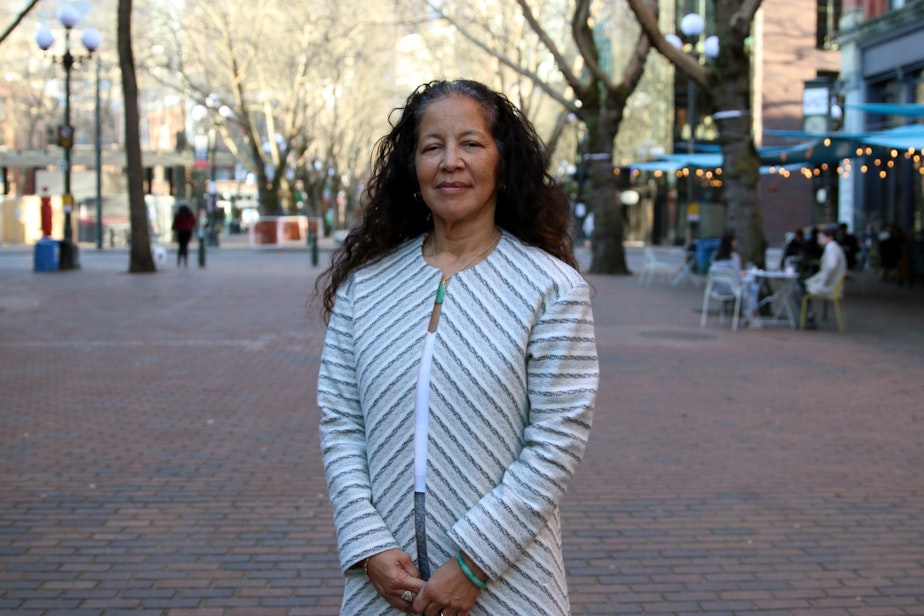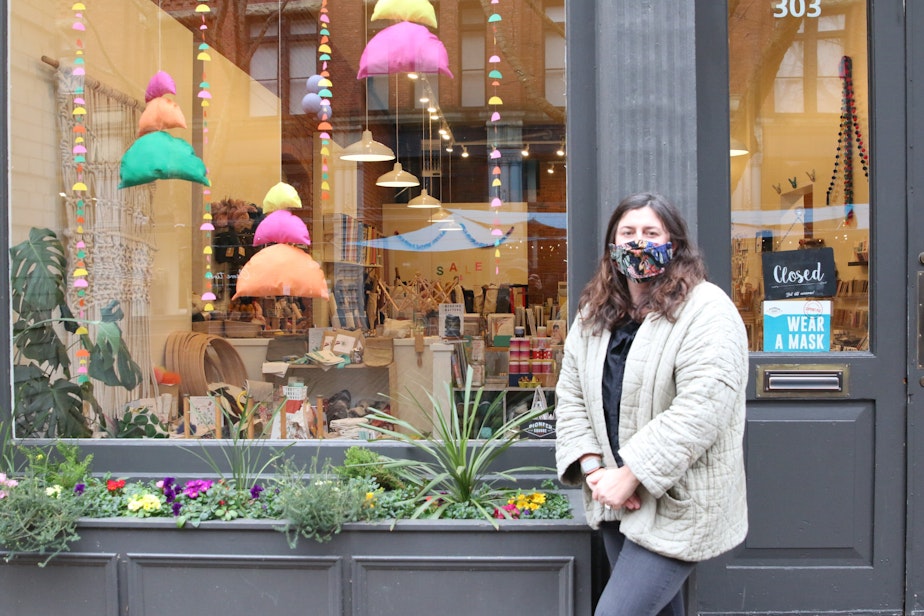Rescuing Seattle's economy will take some creativity. This woman traveled thousands of miles to help

The American Rescue Plan — all that stimulus money coming from the federal government — will give nearly a quarter billion dollars to Seattle.
How will the city spend that money? Pamela Banks is tasked with figuring out a large part of that. Her job is to look at how that money could help businesses recover from the pandemic.
Pamela Banks lived in Seattle for 40 years. She was a longtime city employee and served under several mayors. Later, she ran the local Urban League chapter.
When the pandemic hit, she was retired and living in Atlanta.
This summer, she saw Seattle on the national news. And those images distressed her.
“I watched Seattle on television, and I just couldn’t believe what was going on, and it drove me back here to help," she said. "When I tell people that story, they’re like, 'Wow, you were retired and you came back?' Yeah, I came back 3,000 miles. I mean, that’s how much I love this city. And I know the potential.”
Banks responded to a job opening to help lead the city’s economic recovery and got the job. It felt like fate for her.
Sponsored
“It was like, 'This was meant for you,'" she said. "The universe brought it to me.”
When she started the work in December, she discovered a city in crisis. The pandemic has been hard on neighborhood businesses, but it’s been especially hard on downtown.
RELATED: Stories of Pandemic hardship and reinvention on Seattle's Main Street
Prior to Covid-19, roughly 350,000 people used to work in offices downtown every day.
There was a whole ecosystem of shops and restaurants that served those workers. Keli Faw, the owner of Drygoods Design, is one of them.
Sponsored
Faw's sewing and craft shop in Pioneer Square used to offer classes seven days a week, and employed a dozen instructors. Now, it's staffed only by Faw herself and is open by appointment only.
Without regular customers, it's bleeding money.

"If this was a year and a month ago, this would be — not full — but you would see people passing by every three to four seconds," Faw told KUOW. "Whether or not they were going to meetings or going down and getting coffee. So not having these upstairs neighbors is truly, truly a huge impact.”
Pamela Banks has been speaking to businesses owners, too.
Sponsored
“I heard similar things that you heard," she said, "People were like, ‘We’re glad that we’re open, we’re proud to be open, but we need more foot traffic. And what’s the city gonna do?’”
Banks has some grim news for them: Of the office workers who used to come downtown, she expects only a third of them to return by the end of the year. That means in order for restaurants and shops to survive, there will have to be other reasons for people to come downtown.
Banks has some ideas.
For example, the empty Macy’s store downtown could become a business incubator. Or perhaps something else.
“Maybe we do some artists live/work spaces, maybe we do temporary arts of cultural activities in those spaces," Banks said.
"So that’s the exciting part of it, right?" Banks said. "We’re going to our neighbors saying, 'Hey, we know this block is gonna look like this, what can we do to activate it?'”
Sponsored
You’ll be hearing a lot from the city about “activating” public spaces this summer, with things like concerts and sidewalk cafes.
Banks said the city is trying to give extra help to Black artists and businesses, too, so they’re not shut out of this recovery. For example, she said the city is training up young Black web designers who can help build web pages for Black owned businesses.
RELATED: Black-owned restaurants get tech assist from Seattle teens
A spokesperson said one way that money from the American Rescue plan could be used is to help Seattle grow existing programs already in place, such as grants for small businesses and legal support for businesses facing possible eviction.
But beyond those ideas, Banks and the Mayor's Office can’t offer a lot of specific strategies yet — they said they’re still in the listening stage. Banks said she wants the ideas to come from neighborhoods themselves, rather than being imposed from above.
But once the plans are in place and the city responds, that response will be transformative, Banks said.
Sponsored
“I see us like the phoenix rising from the ashes, like when the big fire happened here and it burnt down," she said. "Together, we are such an amazing city that it will come back. But it’s just gonna take a while, and we have to be patient.”
In the meantime, officials want to see that enough people get vaccinated against Covid-19, and the governor has to decide it’s safe enough to fully reopen businesses. Not to mention, all those federal dollars still have to get here.
In our new series, The Main Street Project, we're looking at the state of the region's economy - by rooting our reporting on specific streets around the region. Read more about Seattle's Main Street here. Later this week, we visit Tacoma, and then Kent.
This story was updated to include additional information about existing programs in Seattle that will benefit from new federal funding.




